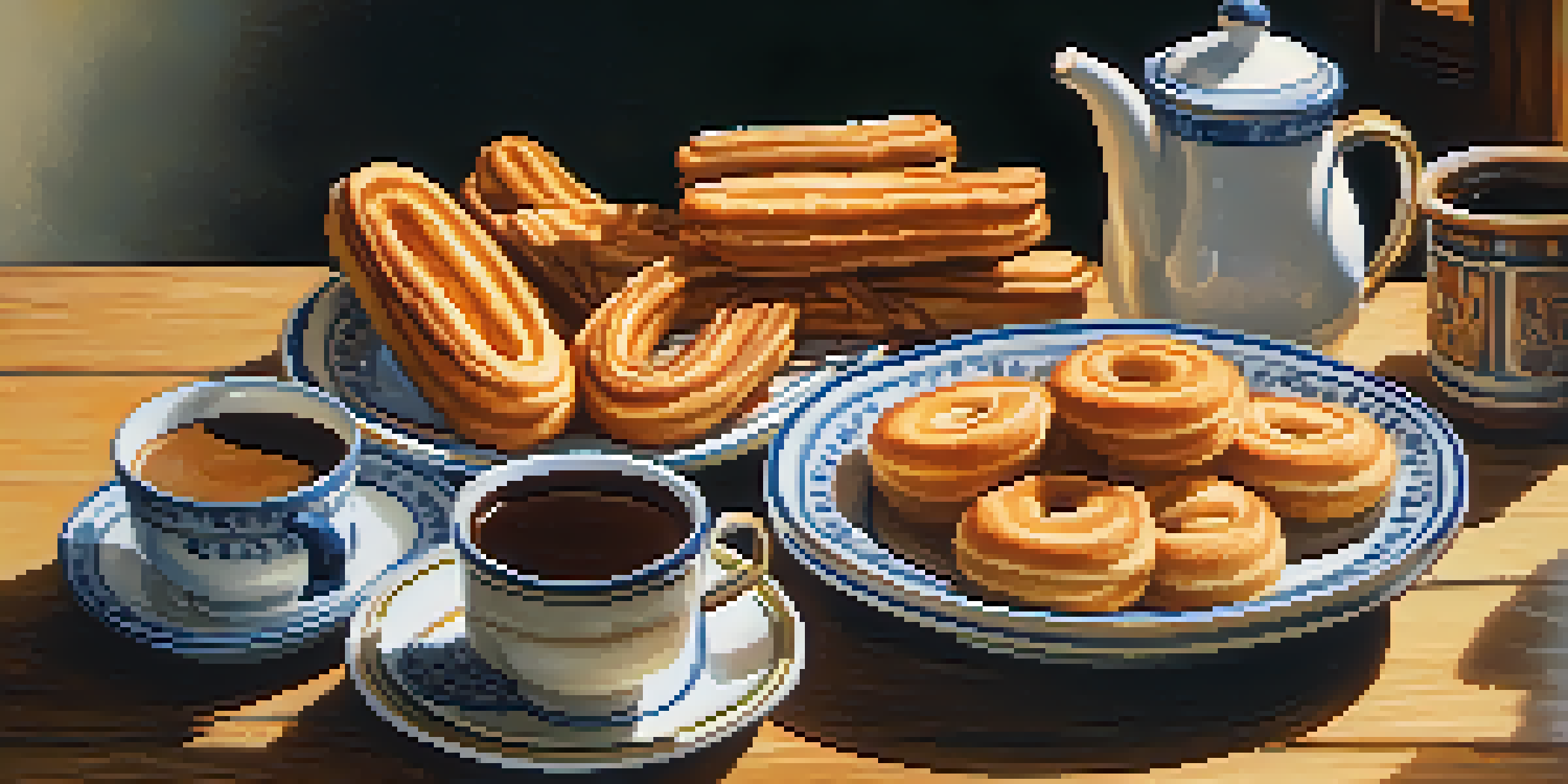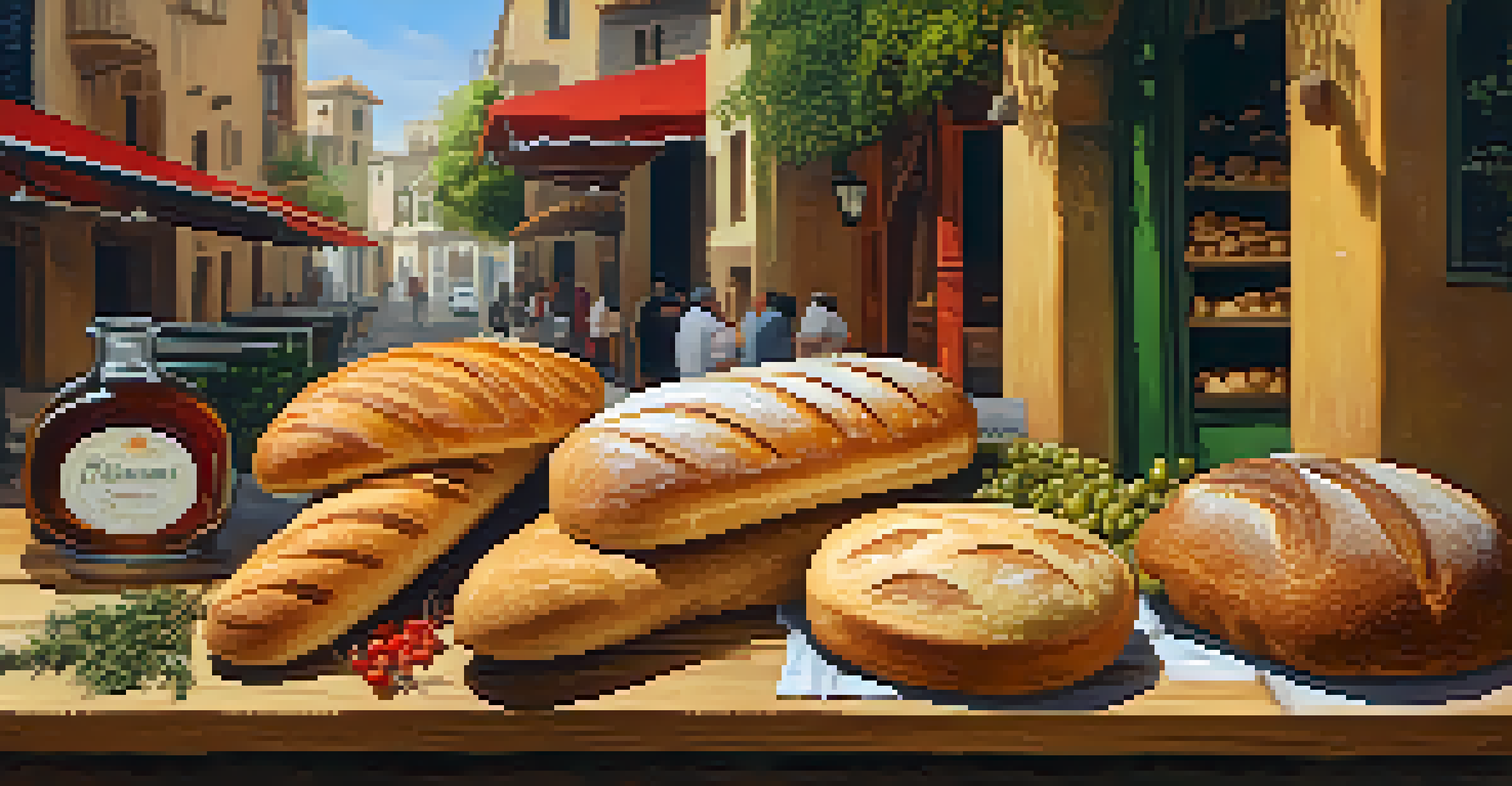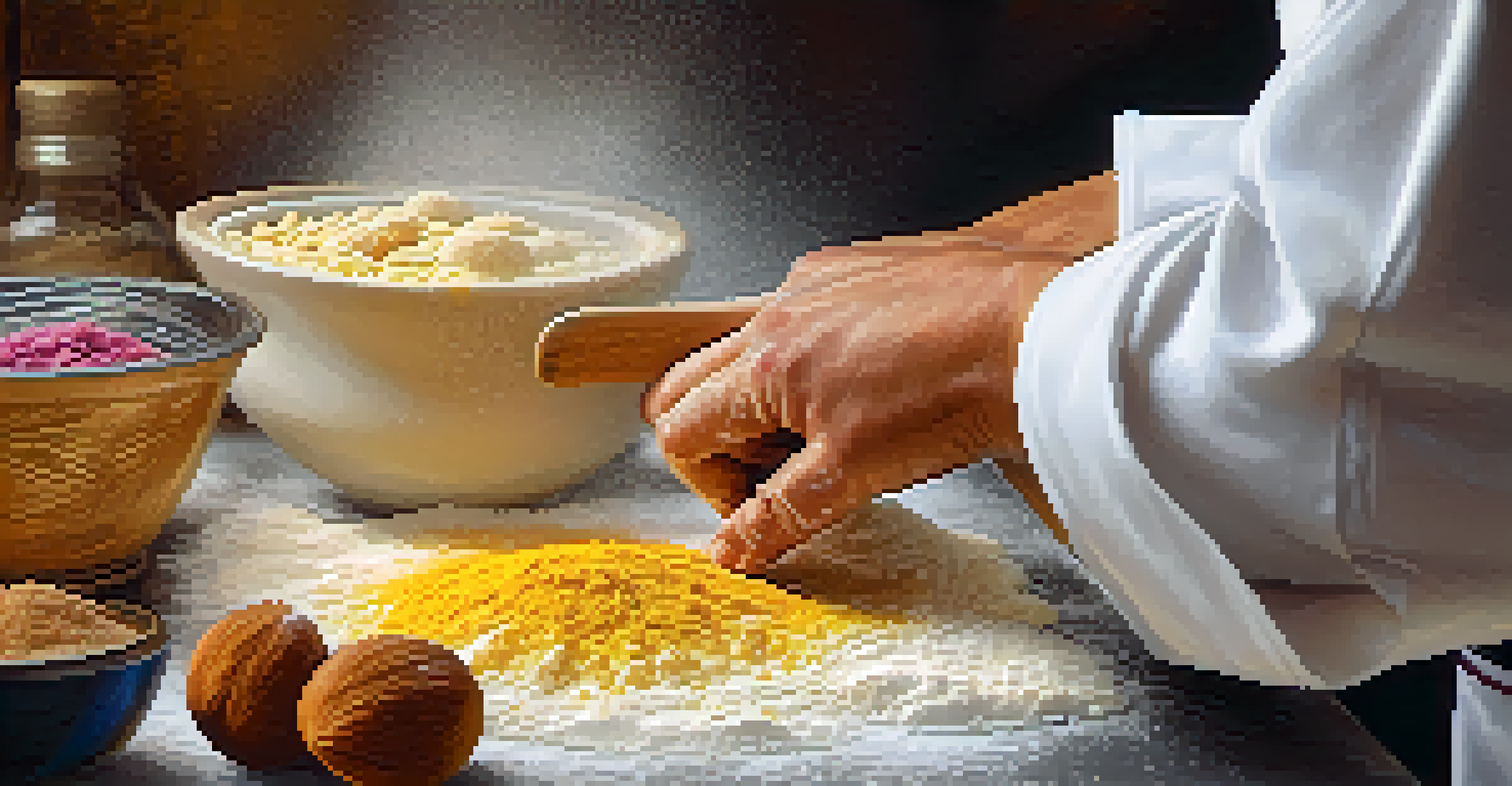Delve into the Art of Spanish Baking in Culinary Classes

Introduction to Spanish Baking: A Rich Culinary Tradition
Spanish baking is a delightful journey that combines rich flavors, history, and culture. From fluffy pastries to hearty breads, each item tells a story that dates back centuries. Whether you're a novice or an experienced baker, discovering Spanish baking can add a new dimension to your culinary repertoire.
Baking is both an art and a science, and mastering it requires understanding how ingredients interact with one another.
Participating in culinary classes focused on Spanish baking allows you to immerse yourself in this vibrant tradition. You'll learn not just the techniques but also the cultural significance behind each recipe. Think of it as a delicious passport to Spain, where each bite transports you to the sun-drenched streets of Barcelona or the bustling markets of Madrid.
In these classes, you’ll explore the ingredients that make Spanish baking unique, such as almonds, olive oil, and various spices. These elements bring a distinct flavor profile that sets Spanish desserts and breads apart from other culinary traditions. So, roll up your sleeves and get ready to dive into this enchanting world!
Essential Ingredients for Spanish Baked Goods
Understanding the key ingredients is crucial when delving into Spanish baking. Common staples include flour, sugar, eggs, and, of course, olive oil, which adds a rich, fruity flavor to many recipes. Every ingredient plays a role, whether it’s the almonds in a classic tarta de Santiago or the saffron in traditional pan de muerto.

In culinary classes, you'll not only learn how to source these ingredients but also how to select the best quality. Fresh, local produce can significantly elevate your baked goods, making them taste authentic and delicious. Imagine walking through a local market in Spain, selecting the best almonds for your next batch of cookies!
Embrace Spanish Baking Traditions
Participating in Spanish baking classes immerses you in rich flavors and cultural significance, enhancing your culinary repertoire.
Additionally, many classes emphasize the importance of understanding how different ingredients affect texture and flavor. For instance, knowing when to use a finer flour versus a coarser one can change the outcome of your bread dramatically. This knowledge turns baking from a simple task into a thoughtful art form.
Traditional Spanish Breads: A Hands-On Experience
One of the highlights of Spanish baking classes is making traditional breads like pan de pueblo or torta de aceite. These breads are not only staples in Spanish cuisine but also embody the essence of communal dining. Baking bread together fosters a sense of community that reflects the heart of Spanish culture.
Good food is all the sweeter when shared with good friends.
In these classes, you’ll learn the step-by-step process of bread-making, from kneading the dough to shaping it. It’s a tactile experience that connects you to the generations of bakers who have perfected these recipes. Each loaf that comes out of the oven is a testament to your newfound skills and understanding.
Moreover, you’ll discover the regional variations of Spanish bread, which differ from one area to another, showcasing the diversity within Spanish culture. Imagine the joy of sampling a crusty loaf from the north paired with a sweet pastry from the south. It’s a delicious exploration of Spain’s culinary landscape!
Exploring Spanish Pastries: Sweet Delights Await
Spanish pastries are a celebration of flavors and textures, and they often steal the show in any baking class. From crispy churros to delicate ensaimadas, these sweets are not just treats; they’re a part of the daily Spanish experience. Learning to make these pastries allows you to appreciate their cultural significance and enjoy them at home.
In your culinary class, you’ll get hands-on experience with various pastry techniques, such as rolling, folding, and glazing. These skills are essential for creating the perfect texture, whether you're making a flaky croissant or a soft, sugar-dusted pastry. There’s something incredibly satisfying about pulling a tray of golden-brown pastries from the oven!
Key Ingredients Enhance Flavors
Understanding essential ingredients like olive oil and almonds is crucial for creating authentic Spanish baked goods.
You’ll also have the opportunity to experiment with traditional fillings like crema pastelera or chocolate, giving your pastries a personalized twist. This creative freedom is what makes baking an art form—each pastry can reflect your unique flavor preferences. Plus, sharing these treats with friends and family makes the experience even sweeter!
Culinary Techniques Unique to Spanish Baking
Spanish baking classes often introduce you to unique techniques that set this cuisine apart. For instance, the use of a sponge method in making certain breads can enhance the texture and flavor. This technique involves fermenting a portion of the dough beforehand, resulting in a more complex taste.
Mastering these techniques requires practice, but that's what makes the learning process exciting! You’ll find that with each class, you’re not just following a recipe; you’re honing your skills and understanding the science behind baking. Think of it as learning a new language, where each technique unlocks a new way to express yourself.
Additionally, many classes emphasize the importance of patience—key in Spanish baking. Allowing dough to rise properly or letting pastries rest before baking can significantly impact the final product. Embracing this slower, more deliberate approach can transform your baking from a rush to a mindful practice.
Pairing Spanish Baked Goods with Beverages
No exploration of Spanish baking is complete without discussing the perfect beverage pairings. Whether it's a robust Spanish coffee or a fruity sangria, the right drink can elevate your baked goods to new heights. Culinary classes often explore these combinations, teaching you how to enhance your baking experience.
Imagine enjoying a slice of moist torta de aceite alongside a glass of sweet Moscatel wine. The flavors complement each other beautifully, creating a harmonious tasting experience. Learning these pairings can add an extra layer of joy to your baking endeavors, allowing you to host gatherings that celebrate Spanish culture.
Pairing Complements the Experience
Perfect beverage pairings, such as coffee or wine, elevate the enjoyment of Spanish baked treats, creating a harmonious dining experience.
Moreover, understanding how flavors interact can inspire you to experiment with your own combinations at home. It’s not just about baking; it’s about crafting an entire experience that brings people together over delicious food and drink. So, get ready to sip and savor as you indulge in your creations!
Taking Your Skills Beyond the Classroom
Once you’ve completed your Spanish baking classes, the real fun begins—bringing those skills into your own kitchen! The knowledge you gain can be applied to various recipes, allowing you to create a repertoire of delightful Spanish treats. Think of your kitchen as a canvas where you can paint with flour and sugar.
Experimenting with recipes at home not only reinforces what you’ve learned but also sparks creativity. You might find yourself adding a personal twist to a traditional recipe or even inventing your own. This willingness to explore can lead to delicious surprises and a deeper appreciation for this art form.

Additionally, sharing your baked goods with friends and family can be incredibly rewarding. Hosting a Spanish-themed dinner or baking session can turn into a delightful tradition that strengthens bonds and creates lasting memories. So, embrace your newfound skills and let the joy of Spanish baking flourish in your home!